Related Research Articles

The Namibian Defence Force (NDF) is the military of Namibia. It was created when South West Africa gained full independence from South Africa in 1990. The constitution of Namibia defines the role of the military as "defending the territory and national interests."

The Portuguese Armed Forces are the military of Portugal. They include the General Staff of the Armed Forces, the other unified bodies and the three service branches: Portuguese Navy, Portuguese Army and Portuguese Air Force.

The Ministry of Defence is the British government department responsible for implementing the defence policy set by Her Majesty's Government and is the headquarters of the British Armed Forces.

A commander-in-chief or supreme commander is the person who exercises supreme command and control over an armed forces or a military branch. As a technical term, it refers to military competencies that reside in a country's executive leadership, a head of state or a head of government.

The South African Navy (SAN) is the naval warfare branch of the South African National Defence Force. The role of the navy is to prepare for and to conduct naval operations in defence of the South African state, its citizens and interests and to carry out peacetime operations in support of other national objectives.
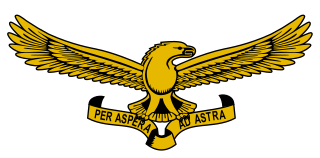
The South African Air Force (SAAF) is the air warfare branch of South African National Defence Force, with its headquarters in Pretoria. The South African Air Force was established on 1 February 1920. The Air Force has seen service in World War II and the Korean War. From 1966 the SAAF was involved in providing infantry support in a low intensity war in Angola, South-West Africa (Namibia) and Rhodesia. As the war progressed, the intensity of air operations increased until in the late 1980s, the SAAF were compelled to fly fighter missions against Angolan aircraft in order to maintain tactical air superiority. On conclusion of the Border War in 1990, aircraft numbers were severely reduced due to economic pressures as well as the cessation of hostilities with neighbouring states. Today the SAAF has a limited air combat capability and has been structured towards regional peace-keeping, disaster relief and maritime patrol operations. During the apartheid era, it was also known by its Afrikaans name of Suid-Afrikaanse Lugmag, a moniker which has since been deprecated.

The Chief of the Defence Staff is the second most senior member of the Canadian Armed Forces and heads the Armed Forces Council, having primary responsibility for command, control, and administration of the forces, as well as military strategy, plans, and requirements. The position is held by a senior member of one of the three main branches of the Canadian Armed Forces. The current CDS, since 17 July 2015, is Jonathan Vance.

The United Kingdom's Strategic Command, previously known as Joint Forces Command (JFC), manages allocated joint capabilities from the three armed services.
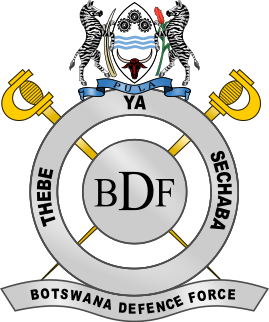
The Botswana Defence Force, the military of Botswana, formed in 1977. The commander-in-chief is Mokgweetsi Masisi. The main force is the army; there is also an air wing and a riverine patrol contingent attached to the ground forces, with 10 Panther airboats and 2 Boston Whaler Raider class.

The Indian Armed Forces are the military forces of the Republic of India. It consists of three professional uniformed services: the Indian Army, Indian Navy, and Indian Air Force. Additionally, the Indian Armed Forces are supported by the Indian Coast Guard and paramilitary organisations and various inter-service commands and institutions such as the Strategic Forces Command, the Andaman and Nicobar Command and the Integrated Defence Staff. The President of India is the Supreme Commander of the Indian Armed Forces. The Indian Armed Forces are under the management of the Ministry of Defence (MoD) of the Government of India. With strength of over 1.4 million active personnel, it is the world's second-largest military force and has the world's largest volunteer army. It also has the third-largest defence budget in the world. As per 2015 Credit Suisse report, the Indian Armed Forces is the world's fifth-most powerful military, whereas the 2020 GlobalFirepower report lists it as the fourth most-powerful military.
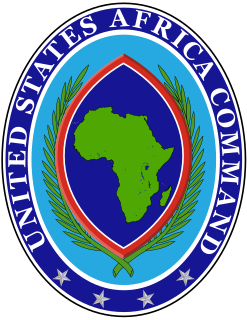
The United States Africa Command, is one of the eleven unified combatant commands of the United States Department of Defense, headquartered at Kelley Barracks, Stuttgart, Germany. It is responsible for U.S. military operations, including fighting regional conflicts and maintaining military relations with 53 African nations. Its area of responsibility covers all of Africa except Egypt, which is within the area of responsibility of the United States Central Command. U.S. AFRICOM headquarters operating budget was $276 million in fiscal year 2012.

The Estonian Defence Forces is the unified armed forces of the Republic of Estonia. The Estonian military is a defence force consisting of Land Forces, Navy, Air Force, and a paramilitary organization Defence League. The national defence policy aims to guarantee the preservation of the independence and sovereignty of the state, the integrity of its land area, territorial waters and airspace and its constitutional order. Its main goals remain the development and maintenance of a credible capability to defend the nation's vital interests and development of the defence forces in a way that ensures their interoperability with the armed forces of NATO and European Union member states to participate in the full range of missions for these military alliances.

The Sri Lanka Armed Forces is the overall unified military of the Democratic Socialist Republic of Sri Lanka encompassing the Sri Lanka Army, the Sri Lanka Navy, and the Sri Lanka Air Force; they are governed by the Ministry of Defence (MoD). The three services have around 346,700 active personnel; conscription has never been imposed in Sri Lanka. The Sri Lanka Coast Guard is also under the purview of the Ministry of Defence but is staffed by civilian personal.
Fleet Command is responsible for the command, operations, readiness, training and force generation of all ships, submarines, aircraft squadrons, diving teams, and shore establishments of the Royal Australian Navy. Fleet Command is headquartered at HMAS Kuttabul in Sydney, and is led by the Commander Australian Fleet (COMAUSFLT), also referred to as Fleet Commander Australia (FCAUST), which is a rear admiral (two-star) appointment.

The School of Artillery is the South African Army's specialized artillery training school
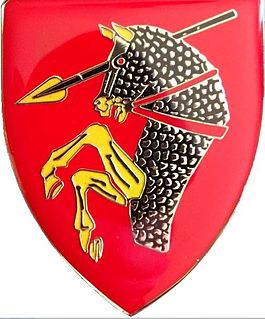
46 South African Brigade was established on April 1, 1999, as part of the restructuring process of the South African Army. Its initial function was to provide a formation headquarters for deployed reserve force elements and support 43 SA Brigade. 46 SA Brigade is a composite brigade consisting of a headquarters in Kensington, Johannesburg and a Brigade Administrative Area at Wallmansthal.
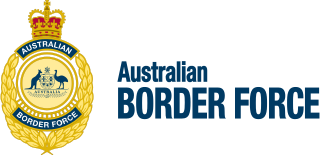
The Australian Border Force (ABF) is a law enforcement agency, part of the Department of Home Affairs, responsible for offshore and onshore border control enforcement, investigations, compliance and detention operations in Australia.

The Venda Defence Force (VDF) was established in September 1982 from the 112 Battalion of the South African Defence Force and the military branch of the Venda National Force which itself had been formed when the Venda homeland became independent from South Africa in September 1979.

The Military Planning and Conduct Capability (MPCC) is a permanent operational headquarters (OHQ) at the military strategic level for military operations of up to 2500 troops deployed as part of the Common Security and Defence Policy (CSDP) of the European Union (EU) by the end of 2020. Since its inception in 2017, the MPCC has commanded three non-executive training missions in Somalia, Mali and the Central African Republic.
The Defence Space Agency(DSA) is a tri-service agency of the Indian Armed Forces. Headquartered in Bengaluru, the agency is tasked with operating the space-warfare and Satellite Intelligence assets of India. The DSA draws personnel from all three branches of the Armed Forces.
References
- 1 2 3 "South African Defence Review 2012" (PDF). South African Government. Archived from the original (PDF) on September 24, 2015. Retrieved August 24, 2015.
| This South African military article is a stub. You can help Wikipedia by expanding it. |